My May 28th blog discussed the Sierra Club’s ranking of university campuses’ sustainability conversions. I also included the organization’s methodology. Later, in my June 4th blog, I suggested that campuses could convert this transitional process into a teaching moment — perhaps even a teaching laboratory. I didn’t, however, list the Sierra Club’s scoring keys anywhere. If a campus decides to put serious efforts into climbing the ranks, it must first know the details of what is involved — including the metrics. The list of these is incredibly long, but I decided that it was essential to have the full set here for reference. Several of the blogs that follow will also depend on this list. Below, I have extracted the 10 highest-scoring activities, along with some suggestions for how campuses should proceed in order to improve their scores in these categories. I then include the full list:

The GHG Protocol Corporate Standard classifies a company’s GHG emissions into three ‘scopes’. Scope 1 emissions are direct emissions from owned or controlled sources. Scope 2 emissions are indirect emissions from the generation of purchased energy. Scope 3 emissions are all indirect emissions (not included in scope 2) that occur in the value chain of the reporting company, including both upstream and downstream emissions.
Colleges should provide a detailed accounting of their scope 1–3 emissions (it’s not necessary to include external evaluations). This makes it easier for the Sierra Club to identify and credit any changes.
 This is self-explanatory.
This is self-explanatory.
 This can be done building by building, starting with the oldest buildings.
This can be done building by building, starting with the oldest buildings.
 There was a June 13th conference on the use of solar energy on CUNY campuses. I will expand on this issue next week with some details about the conference.
There was a June 13th conference on the use of solar energy on CUNY campuses. I will expand on this issue next week with some details about the conference.
 An institution must initially get a detailed accounting of its waste and then identify (and follow through with) actions to reduce it.
An institution must initially get a detailed accounting of its waste and then identify (and follow through with) actions to reduce it.
 Same process as above.
Same process as above.

Since most projects are done by outside contractors, the contracts should include this requirement.
 For educational institutions this is one of the most important topics that will define campuses as working sustainability laboratories.
For educational institutions this is one of the most important topics that will define campuses as working sustainability laboratories.
 This is self-explanatory but is at least relatively easy in NYC where we can contact the power company to request that they deliver at least a certain portion of our electricity from renewable sources.
This is self-explanatory but is at least relatively easy in NYC where we can contact the power company to request that they deliver at least a certain portion of our electricity from renewable sources.
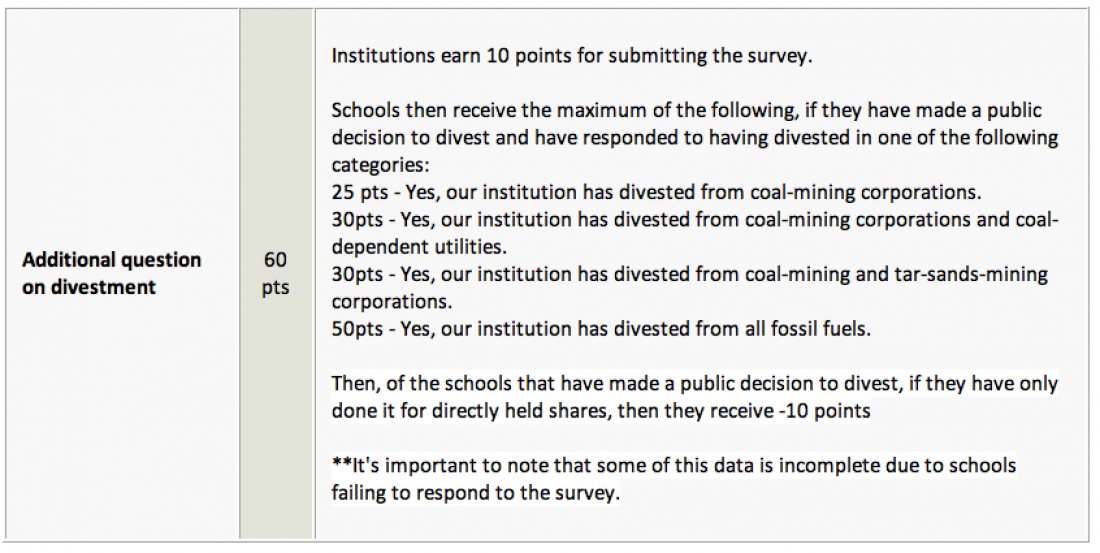 This is by far the highest number of available points and it calls for major action — not just pledges or promises!!
This is by far the highest number of available points and it calls for major action — not just pledges or promises!!
Here’s the full set:
Scoring Key 2016


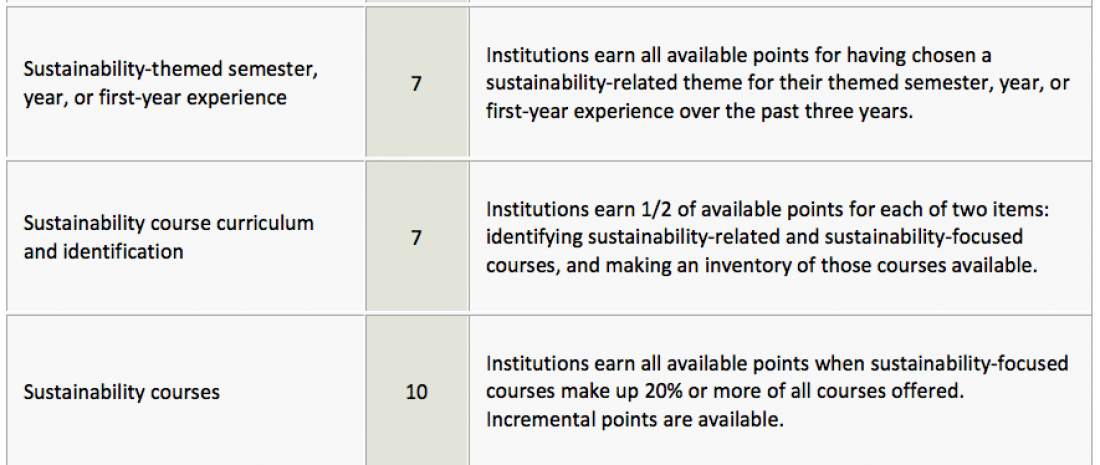
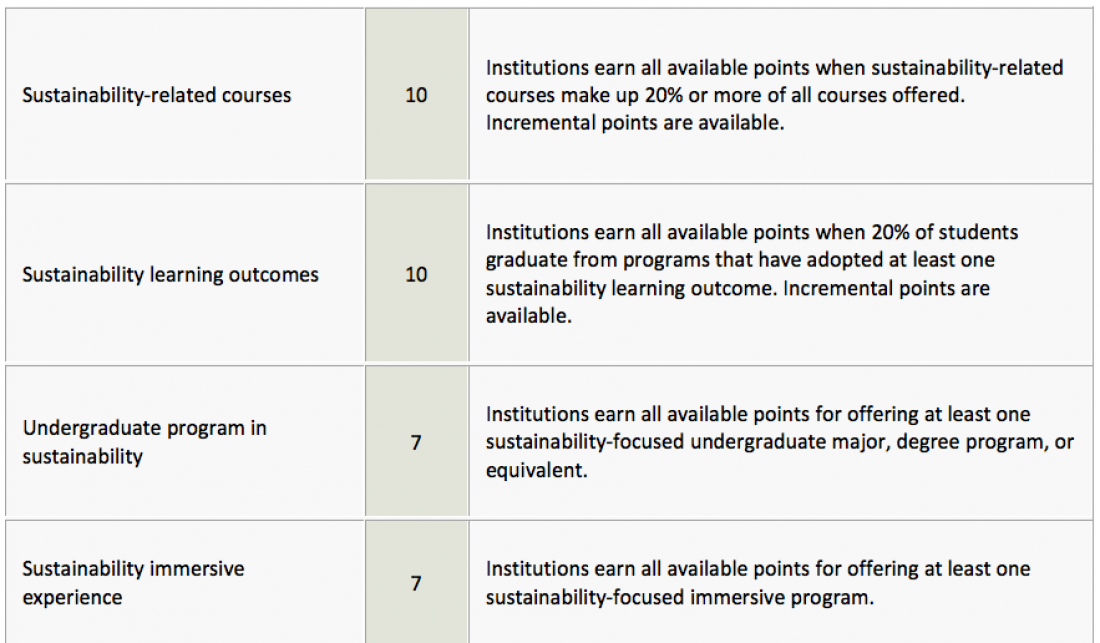
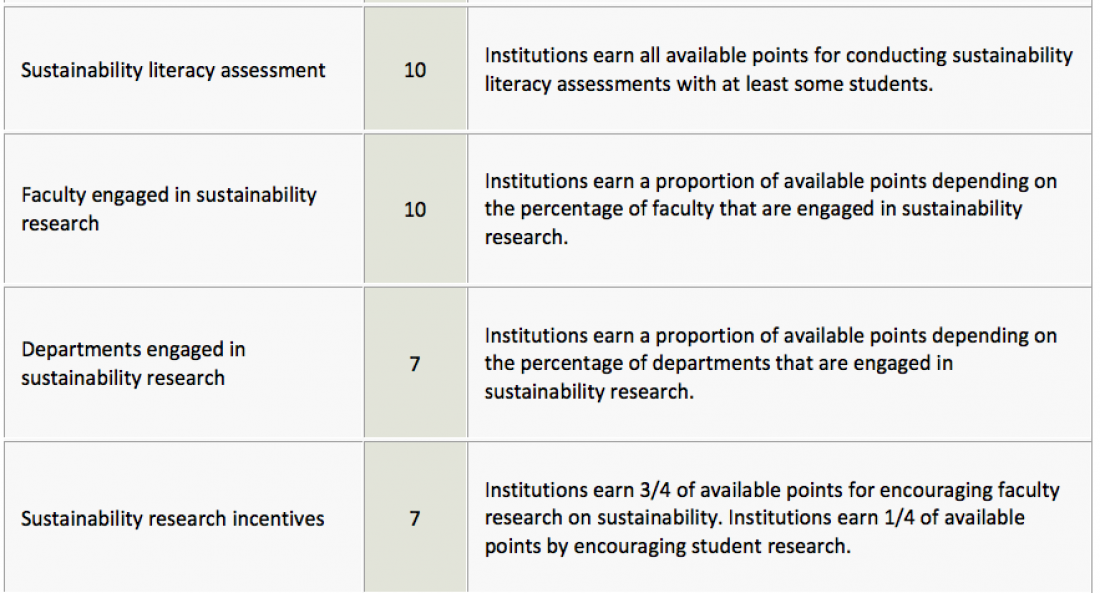

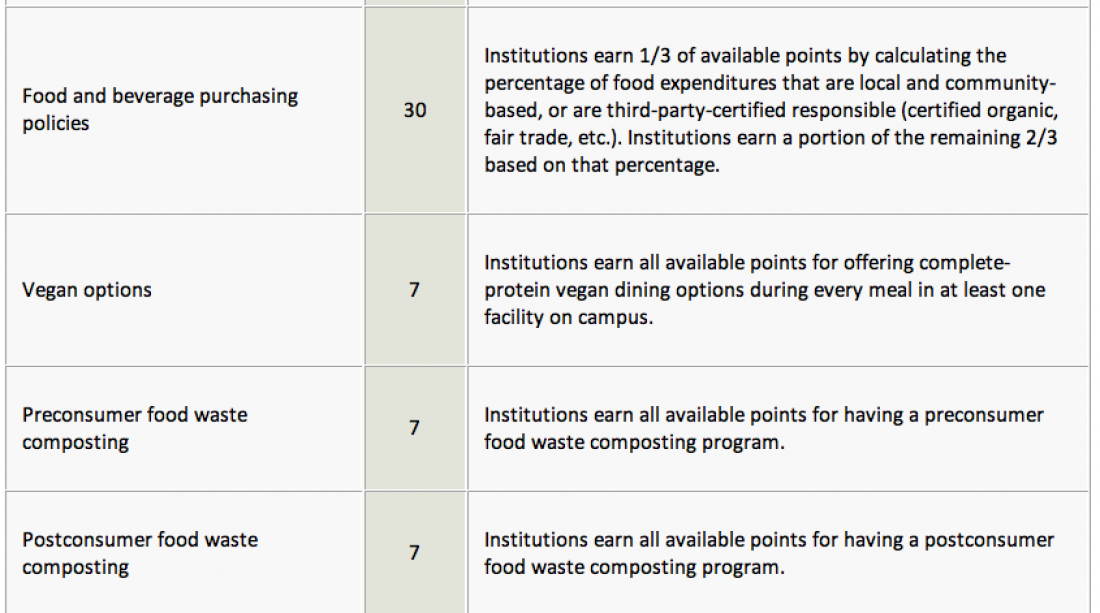
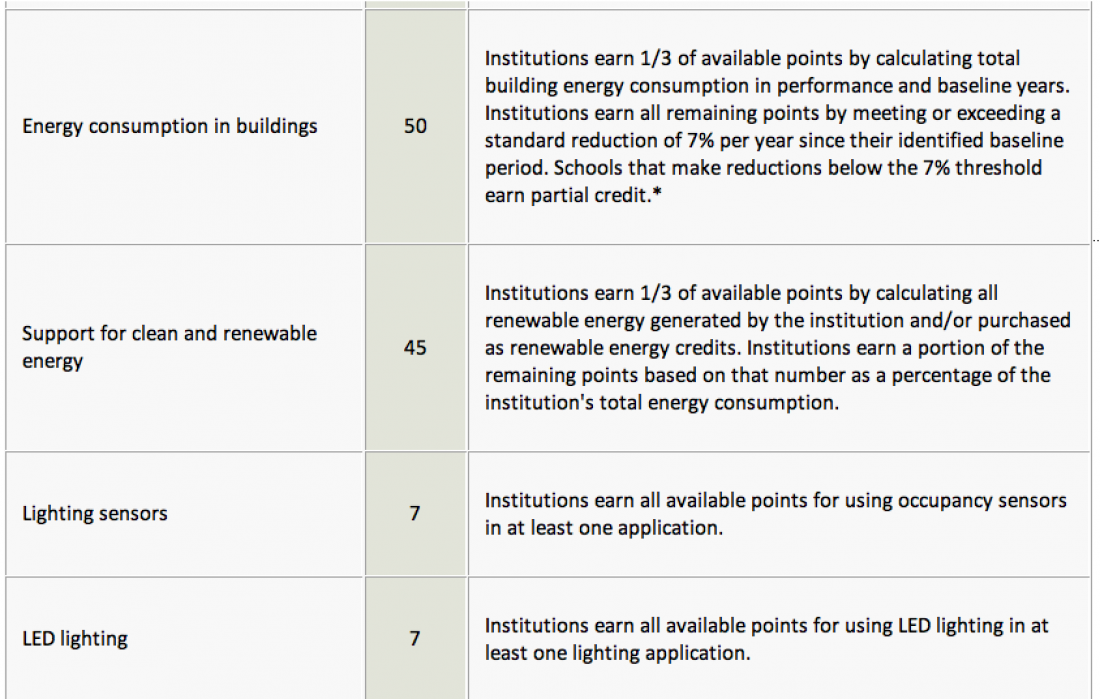

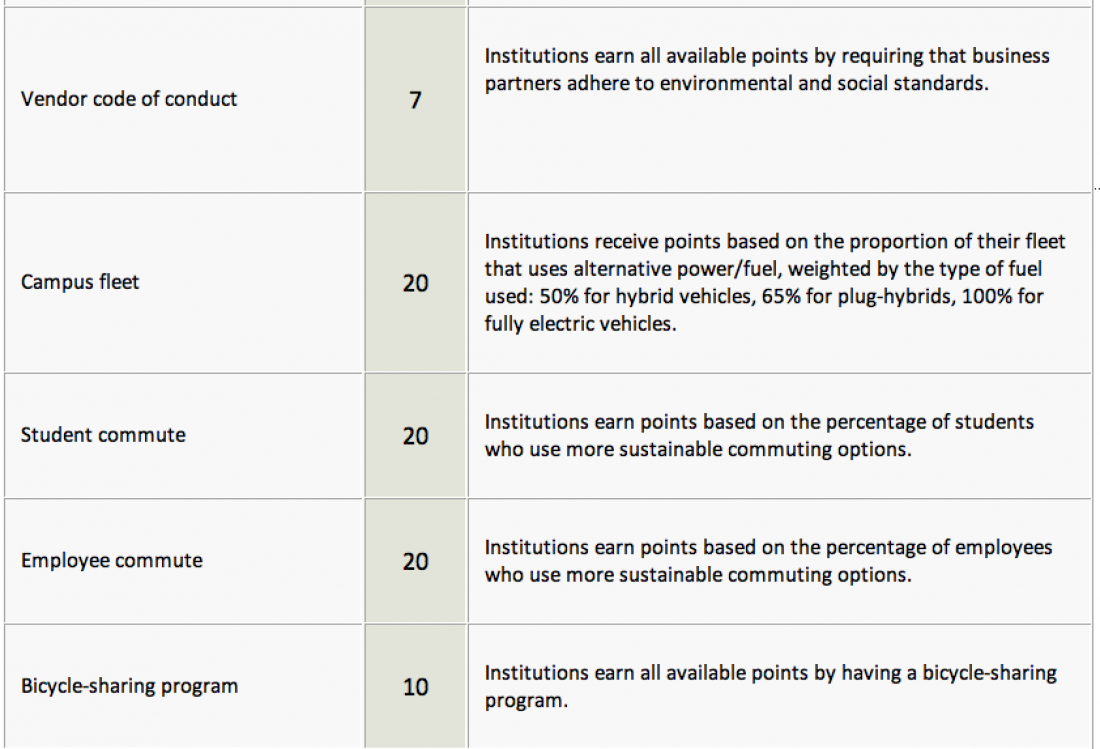
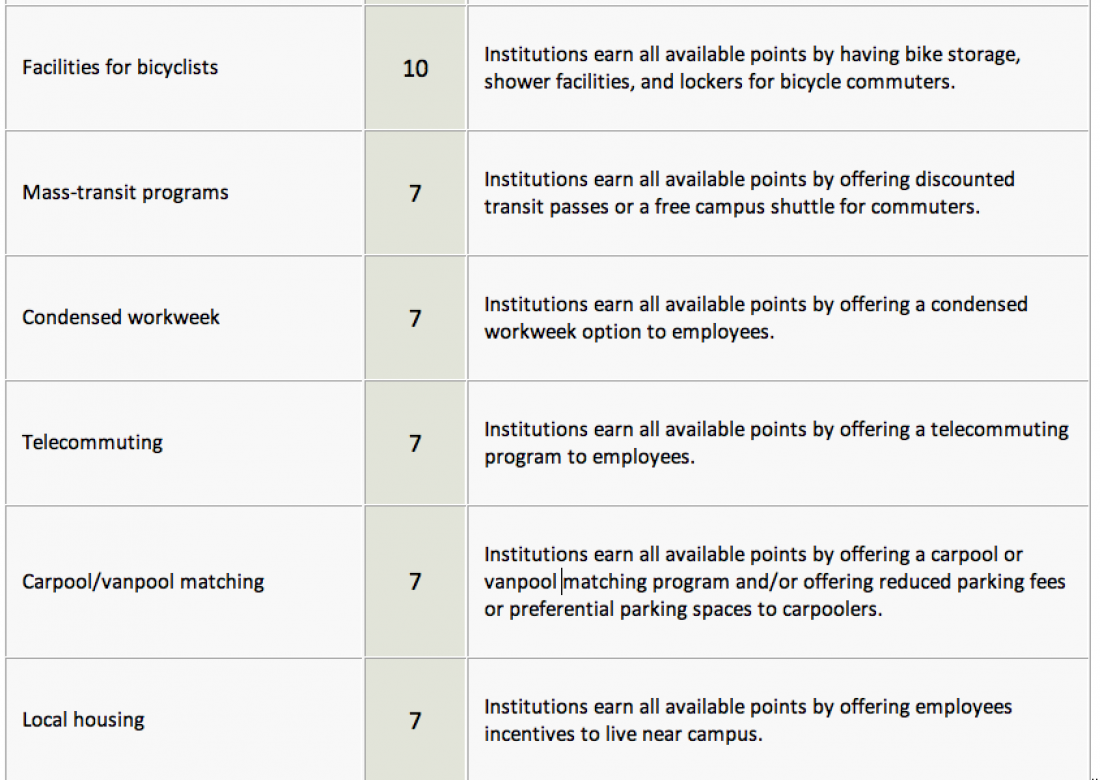
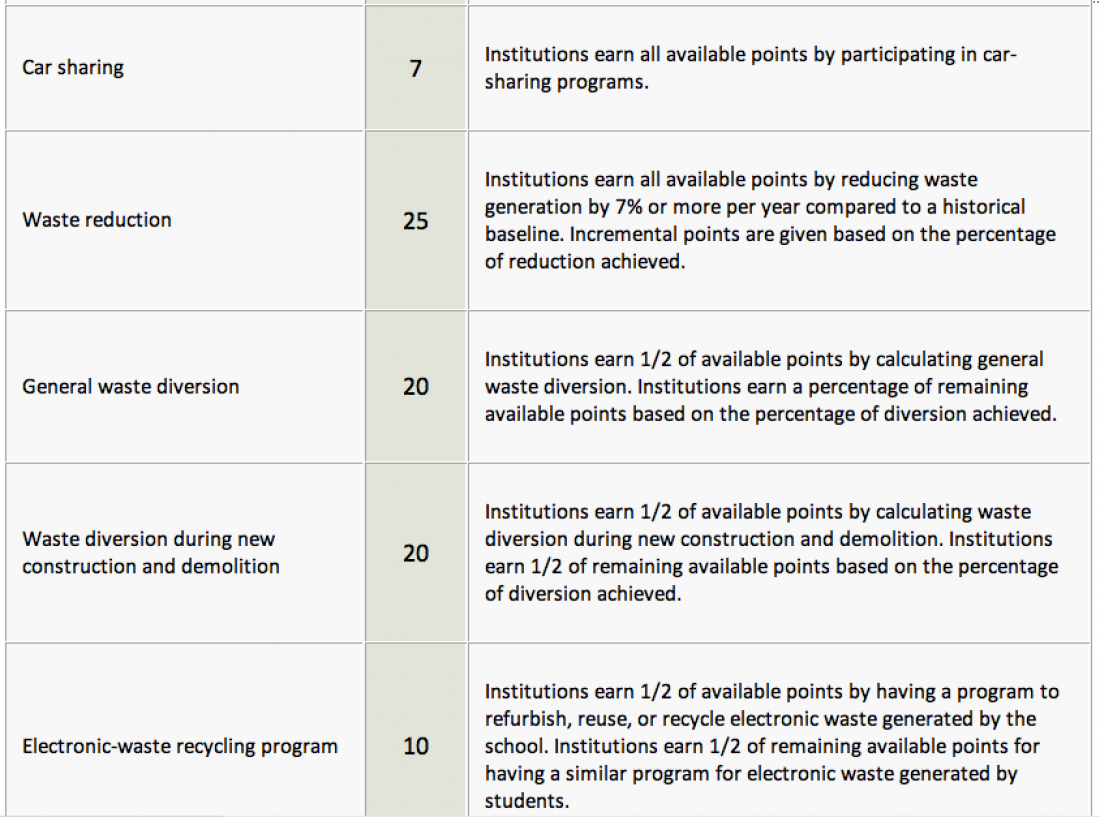
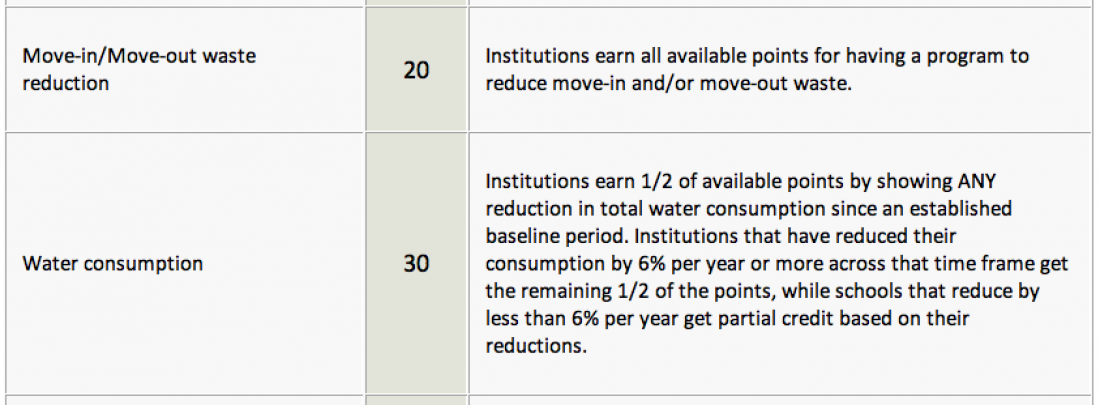

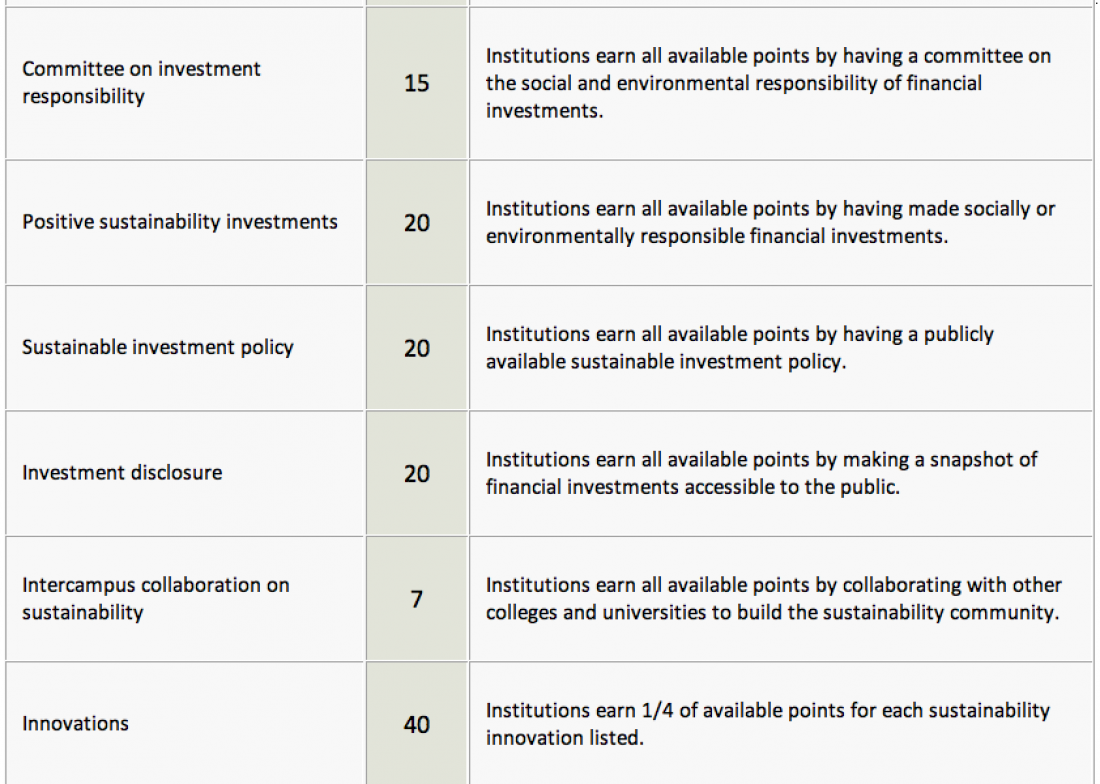
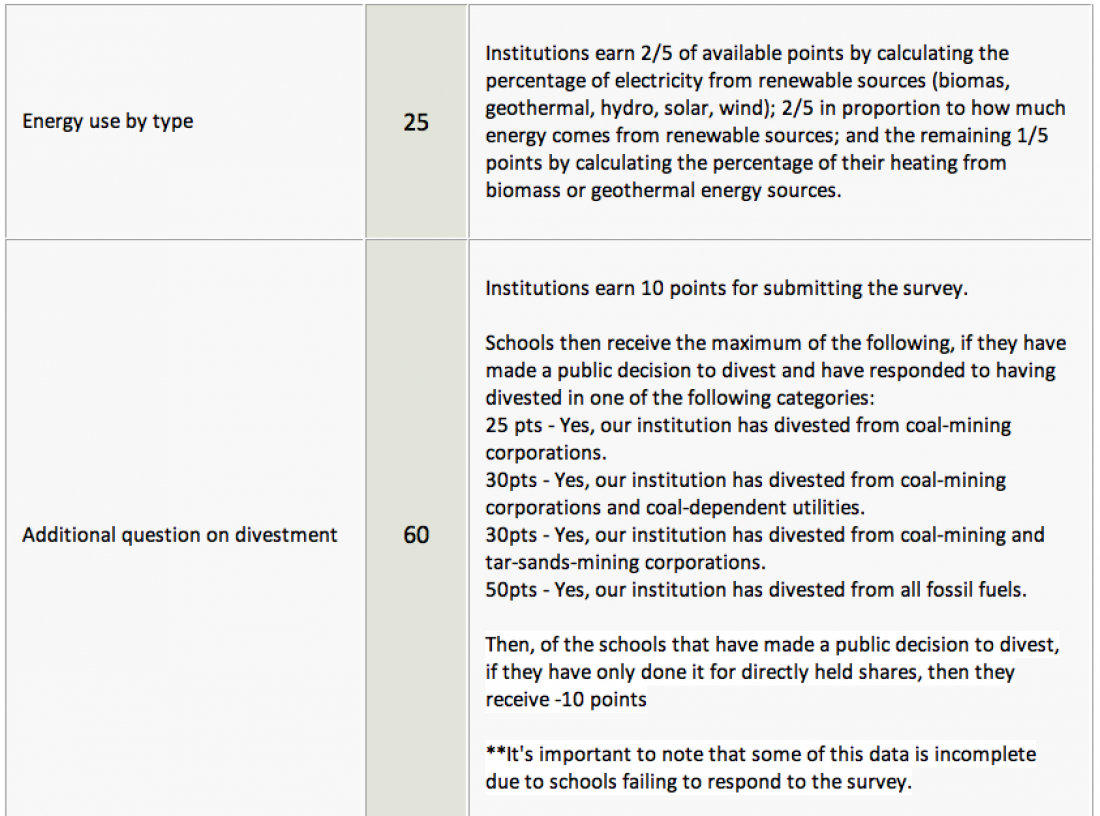


As I was going through the list, I couldn’t help but think back to the radical climate legislation that will begin in 2024. The bill will require landlords to retrofit buildings with renovation in hopes of cutting down emissions. The reason I was reminded of this bill was because of how radical the bill is for many people. Timur Dogan, an architect and building scientist at Cornell University, described this bill as being generated by “forward-thinking and radical policy.” As I read down the list, I realized how our generation must be both foward- thinking and radical as well. If we want to see these changes, it’s important that we are made aware of theses steps we can take. Only then, can we create a movement, as Anastasia mentioned, that can truly bring change to our campus.
Although I was previously aware of a ranking system that determined a building’s sustainability, such as the LEED green building certificate, I did not know that such rankings can exist for whole campuses. Looking through the list I noticed that many of the criteria can be filled if the campus begins to create a sustainability movement that encourages others to decrees their carbon footprint and push administrations to make changes. It would be interesting to see exactly what changes certain campuses make to comply with the criteria, allowing students to keep their campuses accountable for their lack of change.
I too had no idea that there was a ranking system for schools to show their sustainability. I had not even thought that sustainability was an issue that concerned individual colleges. I am glad to know that colleges have a way to measure their sustainability in order to strive to be better, but, at the same time, it seems very complicated due to the sheer amount of things that have to be accounted for. I home CUNY schools can improve their rank and I now understand how hard it must be.
Prior to taking this semester I had no idea that many school are ranked based on their sustainability and initially I was confused as to how the could be done. After looking at the criteria that has been set forth it has helped me to understand why school sustainability is so important. Many colleges have hug campuses that also provide housing to thousands of students. These places are ones that so many people spend time in so it is essential to make them sustainable for the environment. If we can make changes to our colleges, it can help to change peoples ways of life.